https://news.sina.com.cn/w/2019-10-19/doc-iicezuev3327023.shtml
国际新闻>正文
细思恐极 日本上周发生两件比台风更可怕的事
2019年10月19日 18:00 新民周刊
0
原标题:日本上周发生两件比台风更可怕的事
文 | 沈 林
对于最近的日本来说,可以说是多事之秋了。先是超强台风“海贝思”登陆,导致日本严重受灾,特别是东京首都圈,更是发生了创历史的暴雨大风天气。最新数据显示,此次台风已造成日本79人死亡,目前超过9.5万户仍在断水,3900人以上继续避难。
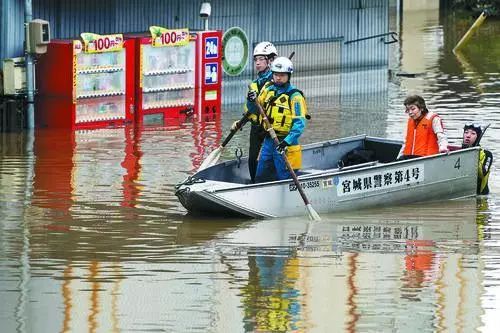
然而,也是在上周,发生了比台风更可怕的两件事。
第一件事情,日本福岛县郡山市政府发布消息,受强台风“海贝思”影响,阿武隈川河水泛滥,该市内一处电镀工厂保存的剧毒氰化钠发生泄漏。对储存工业废水的水池进行调查后,检测出高于排放基准46倍的氰化钠。
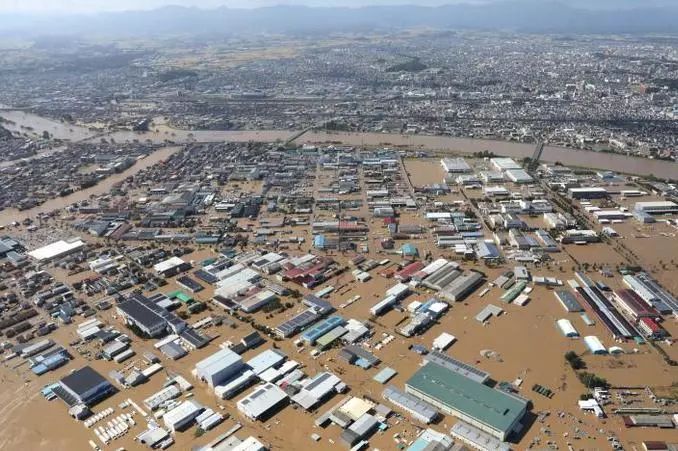
大家对氰化钠可能不太熟悉,它是一种被广泛用于金属电镀加工的原料,然而,该物质被口服或其气体吸入人体后,会解离出氰基离子。
这种离子能与人体中细胞色素酶内的三价铁离子(Fe3+)牢牢地结合,导致它不再能变为二价铁离子(Fe 2+),从而使细胞内一系列的生化反应不能继续进行,人体会出现呼吸肌麻痹、心跳停止、多脏器衰竭等症状而迅速死亡,整个过程仅需数秒。
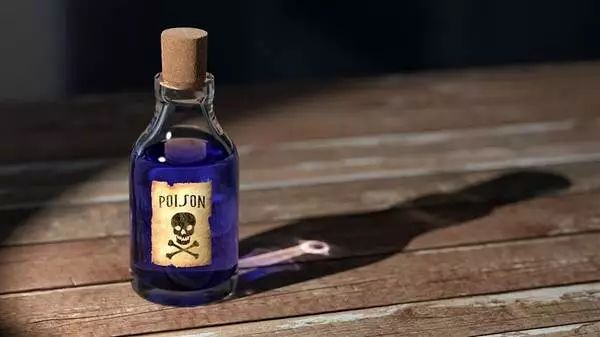
怎么样,是不是感到毛骨悚然?因此,在许多悬疑推理剧中,它也常常被看作是“杀人不见血”的神器。
据悉,该市已经向工厂附近的20户人家发布了紧急避难通知。相关部门也正在回收工厂泄漏出来的池水。
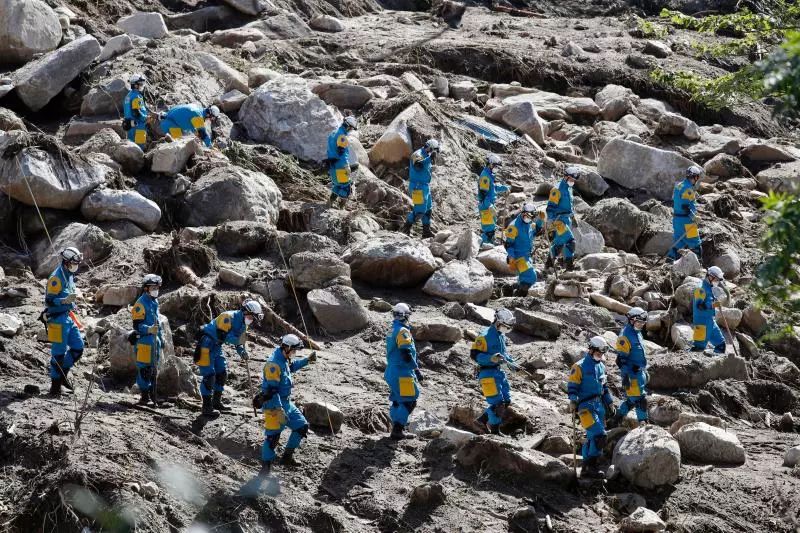
不过,对于如何回收,网友们还是非常怀疑。

毕竟,前段时间为了解决福岛核电站的大量辐射污水,日本环境大臣还为难地表示,“不得不把污水排入太平洋以稀释”。

2011年地震和海啸导致福岛核电站瘫痪后,东京电力公司为防止燃料棒熔化曾注入大量冷却水,随之产生了超过100万吨污水。据悉,污水储存设施将在2022年达到容量极限。
这就要说到台风期间发生的第二件大事。也发生在福岛。
福岛县田村市发布消息称,由于遭受台风侵袭带来大雨引发洪水,导致福岛核事故去污工作中产生的放射性物质等废弃物(包含受核辐射污染的土壤)的临时放置场受灾,装有废弃物的集装袋被冲入了古道川。古道川与高濑川合流后,在浪江町流入太平洋。
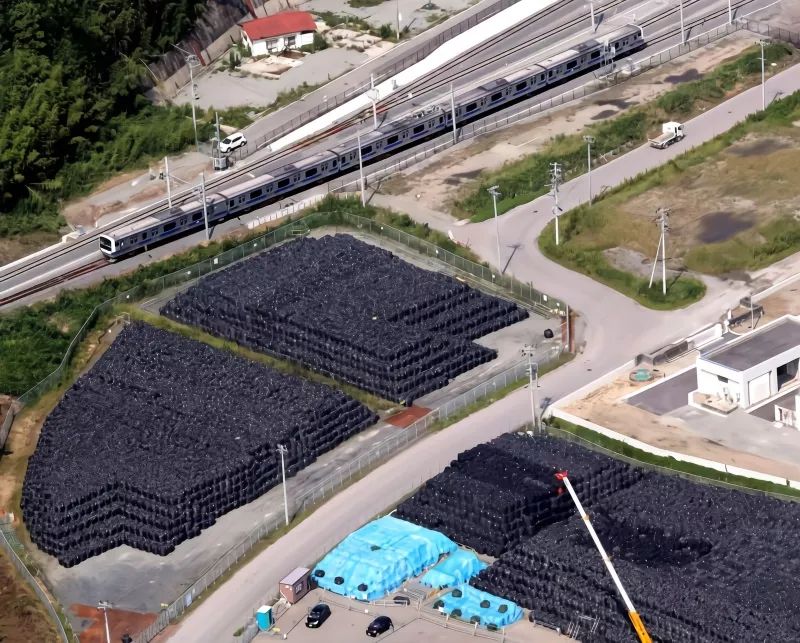
据悉,该地区共存放2667袋福岛核电站事故的污染物,垃圾袋中含有高浓度的碘-131。据当地环保组织分析,这些辐射物很有可能顺着河流进入大海,目前只有10袋被日本官方发现,其他很有可能已经进入海洋,会对整个太平洋的生态环境带来十分恶劣的影响。
其实,这事原本是可以预防的。此前,韩国媒体曾实地查看,发现露天堆放场管理松懈,核废料与河道之间毫无遮挡,且管理松懈,情况不容乐观。
果然,天灾一来,日本这核废料也就“自然而然”流入大海了。对此,日本方面则表示:此事不会影响环境。
也难怪有网友暗搓搓地认为,也许这事儿就是日本处理核废料的一种方式。毕竟天灾不能避免,到时候你可怪不着我咯。。。。。。
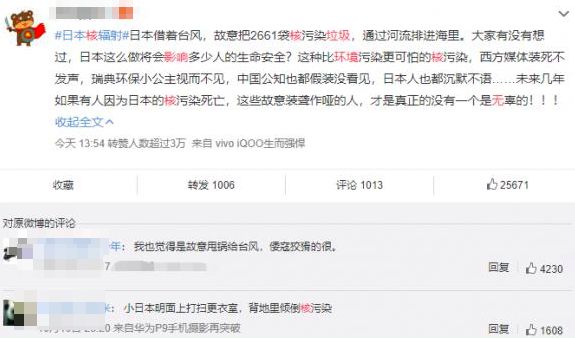
不管如何,这场超强台风无疑暴露了日本应对超级台风等自然灾害的短板,台风到来前一两天,日本媒体就开始密集报道此次台风可能造成的危害,但灾害真的来临时,有受灾民众表示,“海贝思”无疑又一次暴露了日本国土、基建脆弱不堪的事实。
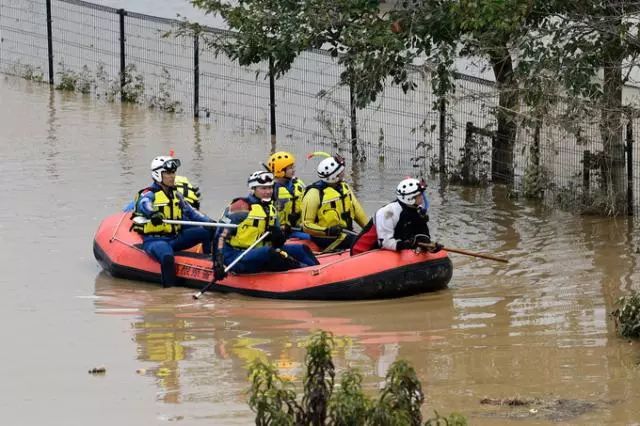
据公布,“海贝思”此次造成了日本政府管理的24条河流、15个地方政府管理的118条河流出现泛滥,河岸决堤多达21处,引发部分地区较大面积浸水。虽然日本政府每年投入大量财力建设水库和堤防,以防止河川泛滥,但近年频发超乎预期的雨灾水害,“治水”效果并不尽如人意。
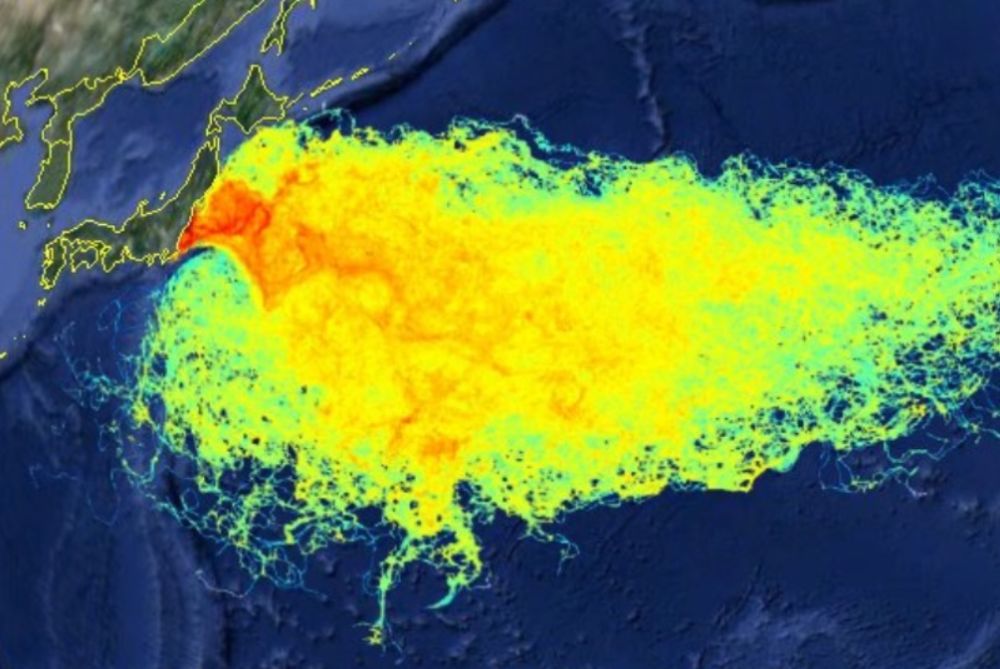
而随着全球变暖,60年后,超级台风可能将以“7年6个”的高频率接近日本。。。。。。要是日本没能经受住考验,那么如同今年这样的人祸恐怕还会接二连三发生,到时候,日本的问题恐怕将会成为全人类的问题。
细思恐极。
点击进入专题:
强台风“海贝思”袭击日本
International News>Text
Thinking about fear, Japan had two more terrible things than the typhoon last week.
October 19, 2019 18:00 Xinmin Weekly
0
Original title: Japan had two more terrible things than the typhoon last week.
Text | Shen Lin
For the recent Japan, it can be said that it is an eventful autumn. First, the typhoon "Habeisi" landed, causing severe disasters in Japan, especially in the Tokyo metropolitan area, and there was a history of heavy rain and wind. The latest data shows that the typhoon has caused 79 deaths in Japan. At present, more than 95,000 households are still in water, and more than 3,900 people continue to take refuge.
However, it was also last week that there were two more terrible things than the typhoon.
The first thing, the government of Koriyama City, Fukushima Prefecture, released a message that the typhoon “Haibeisi” was affected by the strong typhoon “Habeisi”, and the poisonous sodium cyanide preserved in an electroplating factory in the city leaked. After investigating the pool in which industrial wastewater was stored, sodium cyanide was detected 46 times higher than the emission standard.
Everyone may not be familiar with sodium cyanide. It is a raw material widely used in metal plating. However, when it is inhaled or taken into the body by oral or gaseous gases, it will dissociate cyanide ions.
This ion binds well to the ferric ion (Fe3+) in the cytochrome enzyme in the human body, causing it to no longer become divalent iron ions (Fe 2+ ), thus allowing a series of biochemicals in the cell. The reaction can't continue, and the body will die rapidly with symptoms such as respiratory muscle paralysis, cardiac arrest, and multiple organ failure. The whole process takes only a few seconds.
How are you feeling creepy? Therefore, in many suspenseful reasoning dramas, it is often seen as an artifact of "killing people without seeing blood."
It is reported that the city has issued emergency evacuation notices to 20 households near the factory. The relevant departments are also recycling the pool water leaked from the factory.
However, netizens are still very skeptical about how to recycle.
After all, in order to solve the large amount of radiant sewage from the Fukushima nuclear power plant some time ago, the Japanese Minister of the Environment said that it was difficult to discharge the sewage into the Pacific Ocean to dilute it.
After the 2011 earthquake and tsunami caused the Fukushima nuclear power plant, the Tokyo Electric Power Company injected a large amount of cooling water to prevent the fuel rod from melting, which resulted in more than 1 million tons of sewage. It is reported that the sewage storage facility will reach the capacity limit in 2022.
This is about the second big thing that happened during the typhoon. It also happened in Fukushima.
In Tamura City, Fukushima Prefecture, it was reported that floods caused by heavy rain caused by typhoon infestations caused the temporary placement of wastes such as radioactive materials (including soil contaminated with nuclear radiation) generated in the decontamination work of the Fukushima nuclear accident. The container bag containing the waste was flushed into the ancient road. After the merger of Kudori River and Takahata River, it flows into the Pacific Ocean in Lange-cho.
It is reported that a total of 2,667 bags of pollutants from the accident at the Fukushima nuclear power plant were stored in the area, and the garbage bags contained high concentrations of iodine-131. According to local environmental protection organizations, these radiations are likely to enter the sea along the river. At present, only 10 bags have been discovered by Japanese officials. Others are likely to have entered the ocean, which will have a very bad impact on the ecological environment of the entire Pacific Ocean.
In fact, this matter was originally preventable. Previously, the South Korean media had a field check and found that the management of open storage yards was lax, there was no occlusion between nuclear waste and rivers, and management was slack, and the situation was not optimistic.
Sure enough, as soon as the natural disaster occurred, the nuclear waste from Japan would naturally flow into the sea. In this regard, the Japanese side said: this matter will not affect the environment.
It is no wonder that some netizens secretly believe that this may be a way for Japan to deal with nuclear waste. After all, natural disasters cannot be avoided, and you can't blame me at that time. . . . . .
In any case, this super typhoon undoubtedly exposed Japan’s shortcomings in dealing with natural disasters such as super typhoons. One or two days before the typhoon arrived, the Japanese media began to intensively report the possible damage caused by the typhoon, but the disaster really came. Some people affected by the disaster said that "Habei Si" has undoubtedly exposed the fact that Japan's land and infrastructure are fragile.
According to the announcement, “Haibeisi” caused the flooding of 24 rivers managed by the Japanese government and 118 rivers managed by 15 local governments. There were 21 river banks breaking up, causing large areas of water in some areas. Although the Japanese government has invested a lot of money every year to build reservoirs and dikes to prevent flooding in rivers, in recent years, the rains and waters have exceeded expectations, and the effect of “water treatment” has not been satisfactory.
With global warming, 60 years later, the super typhoon may approach Japan at a high frequency of "7 years and 6". . . . . . If Japan fails to withstand the test, then the man-made disaster like this year will probably happen one after another. By then, the Japanese problem will probably become a problem for all mankind.
Think carefully.
Click to enter the topic:
Strong typhoon "Haibeisi" attacked Japan
国际新闻>正文
细思恐极 日本上周发生两件比台风更可怕的事
2019年10月19日 18:00 新民周刊
0
原标题:日本上周发生两件比台风更可怕的事
文 | 沈 林
对于最近的日本来说,可以说是多事之秋了。先是超强台风“海贝思”登陆,导致日本严重受灾,特别是东京首都圈,更是发生了创历史的暴雨大风天气。最新数据显示,此次台风已造成日本79人死亡,目前超过9.5万户仍在断水,3900人以上继续避难。

然而,也是在上周,发生了比台风更可怕的两件事。
第一件事情,日本福岛县郡山市政府发布消息,受强台风“海贝思”影响,阿武隈川河水泛滥,该市内一处电镀工厂保存的剧毒氰化钠发生泄漏。对储存工业废水的水池进行调查后,检测出高于排放基准46倍的氰化钠。

大家对氰化钠可能不太熟悉,它是一种被广泛用于金属电镀加工的原料,然而,该物质被口服或其气体吸入人体后,会解离出氰基离子。
这种离子能与人体中细胞色素酶内的三价铁离子(Fe3+)牢牢地结合,导致它不再能变为二价铁离子(Fe 2+),从而使细胞内一系列的生化反应不能继续进行,人体会出现呼吸肌麻痹、心跳停止、多脏器衰竭等症状而迅速死亡,整个过程仅需数秒。

怎么样,是不是感到毛骨悚然?因此,在许多悬疑推理剧中,它也常常被看作是“杀人不见血”的神器。
据悉,该市已经向工厂附近的20户人家发布了紧急避难通知。相关部门也正在回收工厂泄漏出来的池水。

不过,对于如何回收,网友们还是非常怀疑。

毕竟,前段时间为了解决福岛核电站的大量辐射污水,日本环境大臣还为难地表示,“不得不把污水排入太平洋以稀释”。

2011年地震和海啸导致福岛核电站瘫痪后,东京电力公司为防止燃料棒熔化曾注入大量冷却水,随之产生了超过100万吨污水。据悉,污水储存设施将在2022年达到容量极限。
这就要说到台风期间发生的第二件大事。也发生在福岛。
福岛县田村市发布消息称,由于遭受台风侵袭带来大雨引发洪水,导致福岛核事故去污工作中产生的放射性物质等废弃物(包含受核辐射污染的土壤)的临时放置场受灾,装有废弃物的集装袋被冲入了古道川。古道川与高濑川合流后,在浪江町流入太平洋。

据悉,该地区共存放2667袋福岛核电站事故的污染物,垃圾袋中含有高浓度的碘-131。据当地环保组织分析,这些辐射物很有可能顺着河流进入大海,目前只有10袋被日本官方发现,其他很有可能已经进入海洋,会对整个太平洋的生态环境带来十分恶劣的影响。
其实,这事原本是可以预防的。此前,韩国媒体曾实地查看,发现露天堆放场管理松懈,核废料与河道之间毫无遮挡,且管理松懈,情况不容乐观。
果然,天灾一来,日本这核废料也就“自然而然”流入大海了。对此,日本方面则表示:此事不会影响环境。
也难怪有网友暗搓搓地认为,也许这事儿就是日本处理核废料的一种方式。毕竟天灾不能避免,到时候你可怪不着我咯。。。。。。

不管如何,这场超强台风无疑暴露了日本应对超级台风等自然灾害的短板,台风到来前一两天,日本媒体就开始密集报道此次台风可能造成的危害,但灾害真的来临时,有受灾民众表示,“海贝思”无疑又一次暴露了日本国土、基建脆弱不堪的事实。

据公布,“海贝思”此次造成了日本政府管理的24条河流、15个地方政府管理的118条河流出现泛滥,河岸决堤多达21处,引发部分地区较大面积浸水。虽然日本政府每年投入大量财力建设水库和堤防,以防止河川泛滥,但近年频发超乎预期的雨灾水害,“治水”效果并不尽如人意。

而随着全球变暖,60年后,超级台风可能将以“7年6个”的高频率接近日本。。。。。。要是日本没能经受住考验,那么如同今年这样的人祸恐怕还会接二连三发生,到时候,日本的问题恐怕将会成为全人类的问题。
细思恐极。
点击进入专题:
强台风“海贝思”袭击日本
International News>Text
Thinking about fear, Japan had two more terrible things than the typhoon last week.
October 19, 2019 18:00 Xinmin Weekly
0
Original title: Japan had two more terrible things than the typhoon last week.
Text | Shen Lin
For the recent Japan, it can be said that it is an eventful autumn. First, the typhoon "Habeisi" landed, causing severe disasters in Japan, especially in the Tokyo metropolitan area, and there was a history of heavy rain and wind. The latest data shows that the typhoon has caused 79 deaths in Japan. At present, more than 95,000 households are still in water, and more than 3,900 people continue to take refuge.
However, it was also last week that there were two more terrible things than the typhoon.
The first thing, the government of Koriyama City, Fukushima Prefecture, released a message that the typhoon “Haibeisi” was affected by the strong typhoon “Habeisi”, and the poisonous sodium cyanide preserved in an electroplating factory in the city leaked. After investigating the pool in which industrial wastewater was stored, sodium cyanide was detected 46 times higher than the emission standard.
Everyone may not be familiar with sodium cyanide. It is a raw material widely used in metal plating. However, when it is inhaled or taken into the body by oral or gaseous gases, it will dissociate cyanide ions.
This ion binds well to the ferric ion (Fe3+) in the cytochrome enzyme in the human body, causing it to no longer become divalent iron ions (Fe 2+ ), thus allowing a series of biochemicals in the cell. The reaction can't continue, and the body will die rapidly with symptoms such as respiratory muscle paralysis, cardiac arrest, and multiple organ failure. The whole process takes only a few seconds.
How are you feeling creepy? Therefore, in many suspenseful reasoning dramas, it is often seen as an artifact of "killing people without seeing blood."
It is reported that the city has issued emergency evacuation notices to 20 households near the factory. The relevant departments are also recycling the pool water leaked from the factory.
However, netizens are still very skeptical about how to recycle.
After all, in order to solve the large amount of radiant sewage from the Fukushima nuclear power plant some time ago, the Japanese Minister of the Environment said that it was difficult to discharge the sewage into the Pacific Ocean to dilute it.
After the 2011 earthquake and tsunami caused the Fukushima nuclear power plant, the Tokyo Electric Power Company injected a large amount of cooling water to prevent the fuel rod from melting, which resulted in more than 1 million tons of sewage. It is reported that the sewage storage facility will reach the capacity limit in 2022.
This is about the second big thing that happened during the typhoon. It also happened in Fukushima.
In Tamura City, Fukushima Prefecture, it was reported that floods caused by heavy rain caused by typhoon infestations caused the temporary placement of wastes such as radioactive materials (including soil contaminated with nuclear radiation) generated in the decontamination work of the Fukushima nuclear accident. The container bag containing the waste was flushed into the ancient road. After the merger of Kudori River and Takahata River, it flows into the Pacific Ocean in Lange-cho.
It is reported that a total of 2,667 bags of pollutants from the accident at the Fukushima nuclear power plant were stored in the area, and the garbage bags contained high concentrations of iodine-131. According to local environmental protection organizations, these radiations are likely to enter the sea along the river. At present, only 10 bags have been discovered by Japanese officials. Others are likely to have entered the ocean, which will have a very bad impact on the ecological environment of the entire Pacific Ocean.
In fact, this matter was originally preventable. Previously, the South Korean media had a field check and found that the management of open storage yards was lax, there was no occlusion between nuclear waste and rivers, and management was slack, and the situation was not optimistic.
Sure enough, as soon as the natural disaster occurred, the nuclear waste from Japan would naturally flow into the sea. In this regard, the Japanese side said: this matter will not affect the environment.
It is no wonder that some netizens secretly believe that this may be a way for Japan to deal with nuclear waste. After all, natural disasters cannot be avoided, and you can't blame me at that time. . . . . .
In any case, this super typhoon undoubtedly exposed Japan’s shortcomings in dealing with natural disasters such as super typhoons. One or two days before the typhoon arrived, the Japanese media began to intensively report the possible damage caused by the typhoon, but the disaster really came. Some people affected by the disaster said that "Habei Si" has undoubtedly exposed the fact that Japan's land and infrastructure are fragile.
According to the announcement, “Haibeisi” caused the flooding of 24 rivers managed by the Japanese government and 118 rivers managed by 15 local governments. There were 21 river banks breaking up, causing large areas of water in some areas. Although the Japanese government has invested a lot of money every year to build reservoirs and dikes to prevent flooding in rivers, in recent years, the rains and waters have exceeded expectations, and the effect of “water treatment” has not been satisfactory.
With global warming, 60 years later, the super typhoon may approach Japan at a high frequency of "7 years and 6". . . . . . If Japan fails to withstand the test, then the man-made disaster like this year will probably happen one after another. By then, the Japanese problem will probably become a problem for all mankind.
Think carefully.
Click to enter the topic:
Strong typhoon "Haibeisi" attacked Japan
